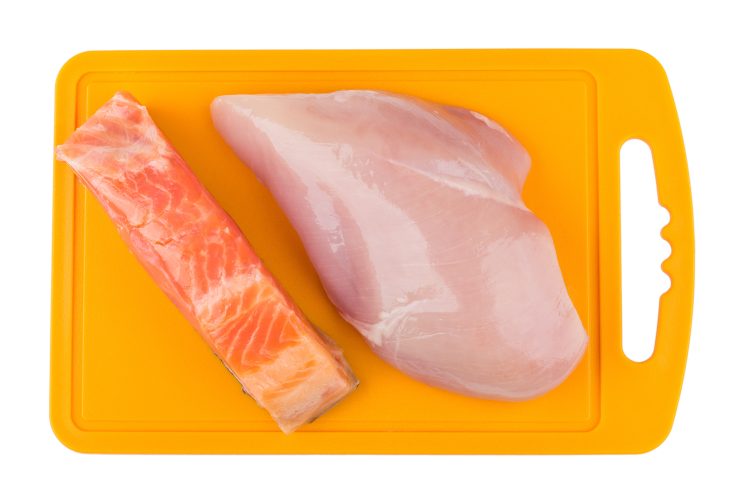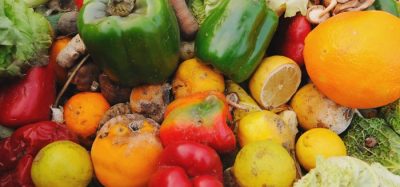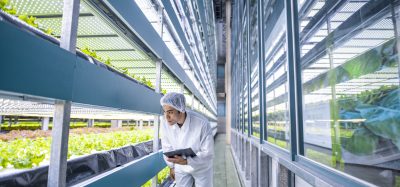In what way is chicken and salmon surprisingly similar?
- Like
- Digg
- Del
- Tumblr
- VKontakte
- Buffer
- Love This
- Odnoklassniki
- Meneame
- Blogger
- Amazon
- Yahoo Mail
- Gmail
- AOL
- Newsvine
- HackerNews
- Evernote
- MySpace
- Mail.ru
- Viadeo
- Line
- Comments
- Yummly
- SMS
- Viber
- Telegram
- Subscribe
- Skype
- Facebook Messenger
- Kakao
- LiveJournal
- Yammer
- Edgar
- Fintel
- Mix
- Instapaper
- Copy Link
Posted: 16 February 2023 | Grace Galler | No comments yet
Scientists have found that, due to their feed, chicken and farmed salmon have “remarkably similar” environmental footprints.


Researchers at the University of California (UCSB) have claimed that the way we farm chicken and salmon means that the two proteins have similar environmental footprints.
Investigating a way of reducing the environmental pressures of food systems on the planet, Ben Halpern, Director of UCSB’s National Center for Ecological Analysis & Synthesis and author of the research paper, along with an international team, analysed the two popular proteins.
“Chicken are fed fish from the ocean, just as are salmon, and salmon are fed crop products like soy, just as are chicken,” commented Halpern, comparing industrially farmed broiler chickens, and farmed salmonids (salmon, marine trout and char).
As well as land-based crops, the researchers found that chickens are fed fishmeal and fish oil; while salmon, which typically eat other fish, are farmed with land-based feed, such as oil crops, soybeans and wheat.
“In a sense, we really do have ‘chicken of the sea,’” said Halpern.
In their study, the researchers discovered that 95 percent of the cumulative environmental footprint of these two items (greenhouse gas emissions, nutrient pollution, freshwater use and spatial disturbance) is concentrated on less than 5 percent of the planet. They also discovered that there was an 85.5 percent spatial overlap between the two products, something they say is “due mostly to shared feed ingredients”.
What’s more, the study found that the total cumulative pressures from chicken production is highest in the United States, China and Brazil.
According to the study, for fish, the highest cumulative pressures are found off the coasts of Chile, Mexico and China, with some pressure on land due to salmon aquaculture. Whereas, the researchers found that while chicken has nine times the environmental footprint of farmed salmon, it has 55 times more production than salmon, an efficiency due “largely to the very fast reproductive cycle of chickens — six to eight weeks to reach slaughter weight versus one to two years for salmon”.
Researchers claim that within that 5 percent of the planet that bears the environmental pressures of chicken and salmon production, there are variations in the farming methods’ environmental efficiencies.
Looking specifically at chicken, the US (the world’s top producer of chicken) and Brazil (second largest) are more efficient than China (third largest). Researchers also noted that there are variations between environmental pressures relative to the amount of salmon produced that differ by geography, indicating opportunities to improve efficiencies while minimising environmental impacts.
Overall, the researchers concluded that chicken and salmon are relatively environmentally efficient in comparison to other animal protein production such as beef and pork. However, they explain that the “magnitude of their production and their overlap in terms of environmental footprint raises interesting questions about the subtle connections between marine and land protein production”, things that they think “could provide opportunities for promoting sustainability”.
“We got really interested in understanding how these two critically important and dominant foods affect our planet and how they compare,” noted Halpern.
“I knew from past research I’ve been part of that what we feed animals is a key part of what determines their environmental footprint, but I really didn’t expect chicken and farmed salmon to be so similar. The old adage that ‘we are what we eat’ applies to farm animals too!”
Related topics
Environment, Quality analysis & quality control (QA/QC), Research & development, Sustainability, World Food









